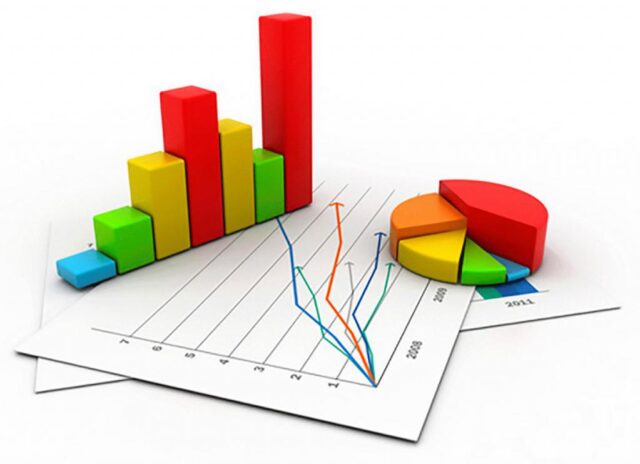Big Data and Data Science have become popular terms in recent years. They tend to be well-researched, which necessitates careful processing and analysis of the data. Descriptive Analysis is one way of analyzing this data. This data must be analysed to uncover significant insights and influential trends that will enable the next batch of content to be created in accordance with the general public’s like or disliking.
Introduction
The process of converting raw data into an easily understandable and interpretable format, i.e., rearranging, organizing, and altering data to provide meaningful information about the presented data.
Describe, show, or constructively summarise data points so that patterns can emerge that satisfy all of the conditions of the data. Descriptive analysis is one type of data analysis that can be used to help describe, show, or constructively summarise data points so that patterns can emerge that satisfy all of the conditions of the data.
One of the most significant tasks in the process of doing statistical data analysis is to create a data set. It provides you with a conclusion about the distribution of your data, assists you in detecting typos and outliers, and allows you to spot commonalities among variables, preparing you for additional statistical data analysis.
Techniques for Descriptive Analysis
- When conducting descriptive analysis, data aggregation and data mining are two strategies that are utilised to generate historical data. Data aggregation collects data and then sorts it to make large datasets more manageable.
- Descriptive approaches generally involve tables of quantities and means, dispersion methods, such as variance or standard deviation, and cross tables and crosstals to perform numerous different hypotheses. These hypotheses frequently draw attention to discrepancies between subgroups.
- When investigating metrics such as segregation, discrimination, and inequality, it is necessary to employ specialised descriptive approaches. Audit studies or decomposition methods are used to measure discrimination. Inequality of outcomes is typically considered a hallmark of unjust social processes; reliable measurement of the different phases across geography and time is a precondition for comprehending these processes.
- When drawing key distinctions between subgroups, a table of means by subgroup is utilised to demonstrate differences, leading to inferences and conclusions being drawn. When we see a discrepancy in earnings, for example, we automatically anticipate reasons for such trends to continue.
- However, this also enters the realm of impact measurement, which necessitates the application of several approaches. Random variations often generate a medium difference, and statistical inferences are necessary to establish if the observed variations could occur simply because of chance.
- A crosstab, also known as a two-way tabulation, is designed to display the proportions of components that have unique values for each of the two variables available, also known as cell proportions. For example, we might tabulate the fraction of the population with a high school diploma who also receives food or financial assistance, which would necessitate a crosstab of education versus help receipt.
When we study the different percentages of those receiving food or financial help, we might also wish to look at the proportions of those who receive aid in each education category. We might discover that support levels dramatically decrease with higher education.
Column proportions for a fraction of the population with different educational levels can also be investigated, however, this is the opposite of any causal impact. We may encounter an unusually high number or proportion of recipients with a college education, but this could be because college graduates outnumber those with only a high school diploma.
Types of Descriptive Analysis
Descriptive analyses may be classified into four types of frequency, central tendency, dispersal or variation and position measurements. These techniques are useful when dealing with a single variable at a time.
- Frequency Measurements
It’s critical to know how frequently a given event or response is expected to occur in descriptive analysis. The primary goal of frequency measures, such as a count or a percentage, is to achieve this.
- Central Tendency Measures
Finding the Central (or average) Tendency or Response is also crucial in descriptive analysis. Three averages are used to determine central tendency: mean, median, and mode. Take, for example, a survey in which 1,000 people’s weight is measured. The mean average would be an appropriate descriptive statistic for measuring mid-values in this scenario.
- Dispersion Measures
It’s sometimes necessary to understand how data is distributed throughout a range. Consider the average weight of a group of two persons as an example. If both people weigh 60 kilograms, the average weight will be 60 kilograms. However, if one person weighs 50 kilograms and the other weighs 70 kilograms, the average weight is still 60 kilograms. This type of distribution can be measured using dispersion measures such as range or standard deviation.
- Positional Measurements
The descriptive analysis also entails determining the relative location of a single value or response to others. In this field, measures like percentiles and quartiles are extremely valuable.
Aside from that, if you have data on numerous variables, you can utilize bivariate or multivariate descriptive statistics to see whether there are any associations.
The bivariate analysis examines the frequency and variability of two independent variables at the same time to determine if they appear to have a pattern and vary in tandem. Additionally, you can evaluate and compare the central tendency of the two variables before conducting further statistical analysis.
Multivariate analysis is similar to bivariate analysis, only it involves more than two variables. Bivariate analysis can be done using the following two methods.
- Table of contingencies
In a contingency table, each cell reflects the combination of the two factors in the situation being considered. An independent variable (e.g., gender) is listed on the vertical axis, while a dependent variable (e.g., age) is counted on the horizontal axis (e.g., activities). To see how the two variables, independent and dependent variables, relate to each other, read “across” the table.
- Scatter plots
In the case of a scatter plot, you can look at how two or three separate variables relate to one another. It’s a visual representation of a relationship’s strength.
The Benefits of a Descriptive Analysis
- One of the key advantages of Descriptive Analysis is the researchers’ high level of integrity and neutrality. The reason why researchers must be particularly cautious is that descriptive analysis reveals many aspects of the data extracted, and if the data does not match the trends, it will result in massive data dumping.
- Descriptive analysis is thought to be more comprehensive than other quantitative methods, providing a more complete picture of an event or phenomena. When conducting Descriptive analysis, it is possible to employ any number of variables, or even a single number of variables.
- This technique of analysis is regarded as a superior way of collecting information, describing relationships as natural and presenting the present environment. Because all trends are based on real-life facts, this analysis is incredibly human and real.
- It is beneficial for identifying variables and new hypotheses that may be investigated experimentally and inferentially. It is regarded useful since the margin for error is very small because we are extracting the trends directly from the data attributes, which reduces the possibility of human error.
- This sort of study allows the researcher to use both quantitative and qualitative data to learn about the population’s characteristics.
- For instance, researchers can utilise both case studies and correlation analysis to characterise a phenomenon in their own unique way. By use case studies to describe people, events, and institutions, the researcher can gain a thorough understanding of the set’s behaviour and pattern.
- In surveys, which are one of the main types of statistical analysis, the researcher gathers data points from a large number of samples, as opposed to experimental studies, which require smaller samples.
The survey approach has the distinct benefit over other Descriptive analysis methods in that it allows researchers to study larger groups of people with ease. If the surveys are effectively administered, they provide a more detailed and accurate picture of the unit under study.

















































































